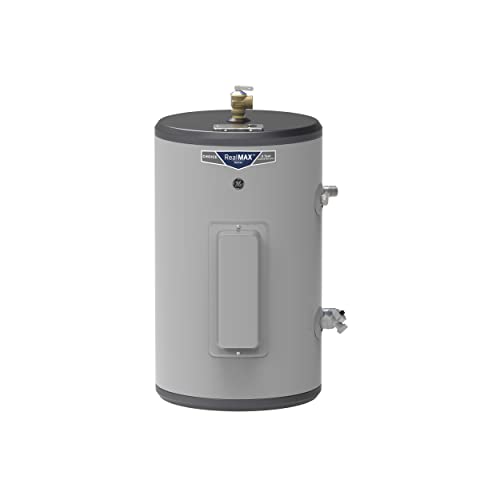You can resolve your household's increased demand for hot water by adding a second water heater and connecting the two heaters. But how do you do this? We researched to show you how.
There are two ways to connect two electric water heaters:
Parallel electric water heater connection
- Fix a pipe tee to the cold water inlet and attach horizontal pipes to each end.
- Attach vertical pipes to the horizontal ones, one on each end. One vertical pipe enters the first heater, and the other enters the second.
- For the hot water outlet, attach vertical pipes, one from the first tank and the other from the second tank.
- Join two horizontal pipes, one to each vertical pipe, and connect them with a pipe tee.
Series electric water heater connection
- Attach cold water inlet to the first tank.
- Attach a pipe to the first tank and connect it to the second tank.
- Attach a pipe to the second tank that finally enters your home.
Keep reading to learn how to connect two electric water heaters. We also tackled the signs to look out for that indicate your heater may have a problem and included tips on maintaining the heaters so they can last longer.
How Do You Connect Two Electric Water Heater Tanks?
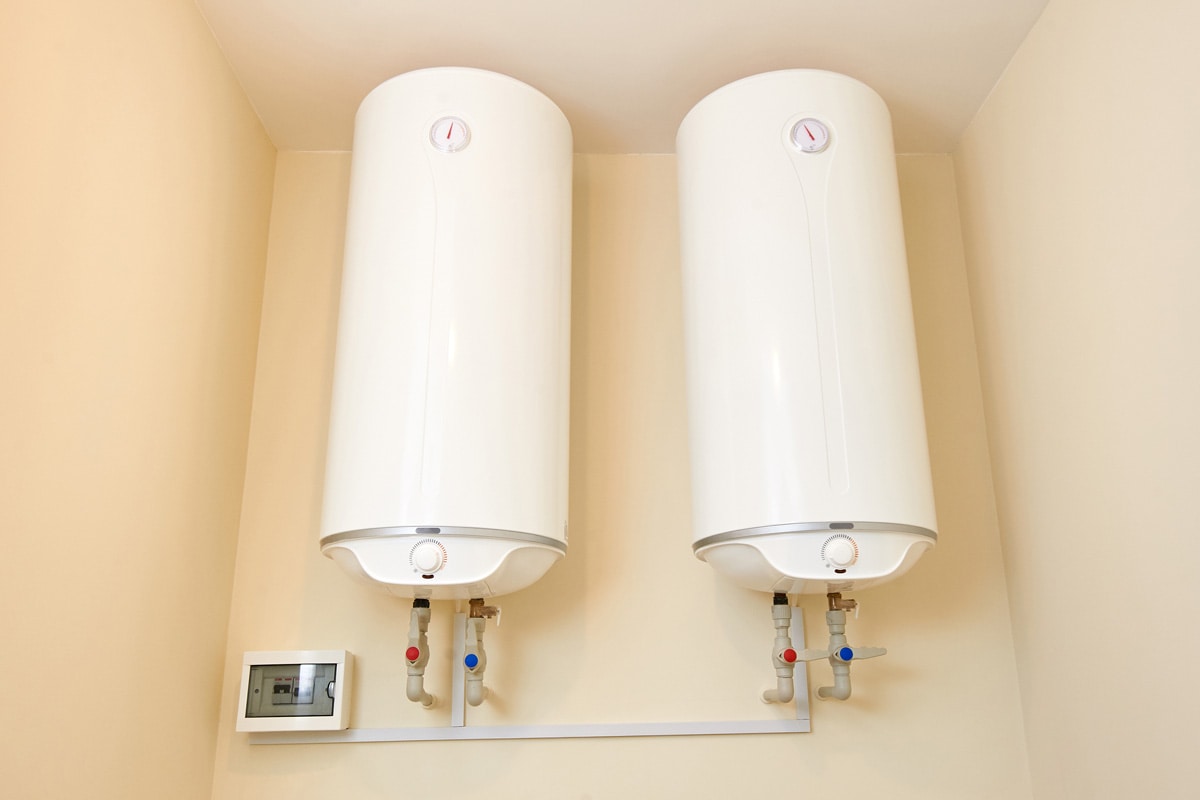
If your home's consumption of hot water increases, you can add an extra tank. Due to the complexity of such a job, it might be necessary to use the services of a licensed plumber who can connect the new tank to an existing one.
If you prefer doing it yourself, we provide a guide on how to proceed below - you can use parallel or series connections.
Connecting Two Electric Water Heaters In Parallel
You can find this electric water heater tank on Amazon.
Water heater tanks connected in parallel must have the same BTU (British Thermal Unit) and storage capacity. In this setup, an equal amount of hot water leaves each tank, and similarly, an equal amount of cold water enters the tanks. This means each heater discharges similar amounts of workload.
Below is a guide describing how a plumber connects one heater to another in parallel:
- Since you have only one cold inlet pipe that feeds into your current heater tank, add a pipe tee fitting to the cold water inlet pipe. This fitting has two outlets, one on each side at 90 degrees angle.
- Attach a horizontal pipe with equal lengths on each side of the pipe tee fitting.
- Connect a vertical pipe to each horizontal pipe you have just added. The two pipes should have the same distance vertically.
- One vertical pipe goes into the first water heater, and the other goes into the second water heater.
- Equally, the hot water goes out through two pipes rising vertically, one from each tank.
- Join these two vertical pipes with two horizontal pipes that are also joined together at the center with a pipe tee fitting. A single pipe runs upwards from this fitting to release the hot water into your home.
These are T-pipe connectors found on Amazon.
Check out the video below that explains the above process:
Connecting Two Water Heaters In Series
When you connect two water heater tanks in series, cold water enters the first tank, gets heated, and then travels to the second tank. The hot water then moves from the second tank into your home's faucets.
With this type of connection, the tanks do not necessarily need to be of the same BTU or storage capacity. However, the tank with the highest BTU should be the first tank in which cold water enters.
If you want to connect your electric water tanks this way, follow the guide below:
- Connect the cold water inlet to the first tank.
- Install a pipe to connect the first tank to the second one. This pipe draws out the hot water from the first tank and into the second tank.
- Fix another pipe from the second tank and connect it to the water supply. It delivers hot water into your home.
Check out the video below that explains this process:
Which Is Better, Parallel Or Series Water Heater Connections?
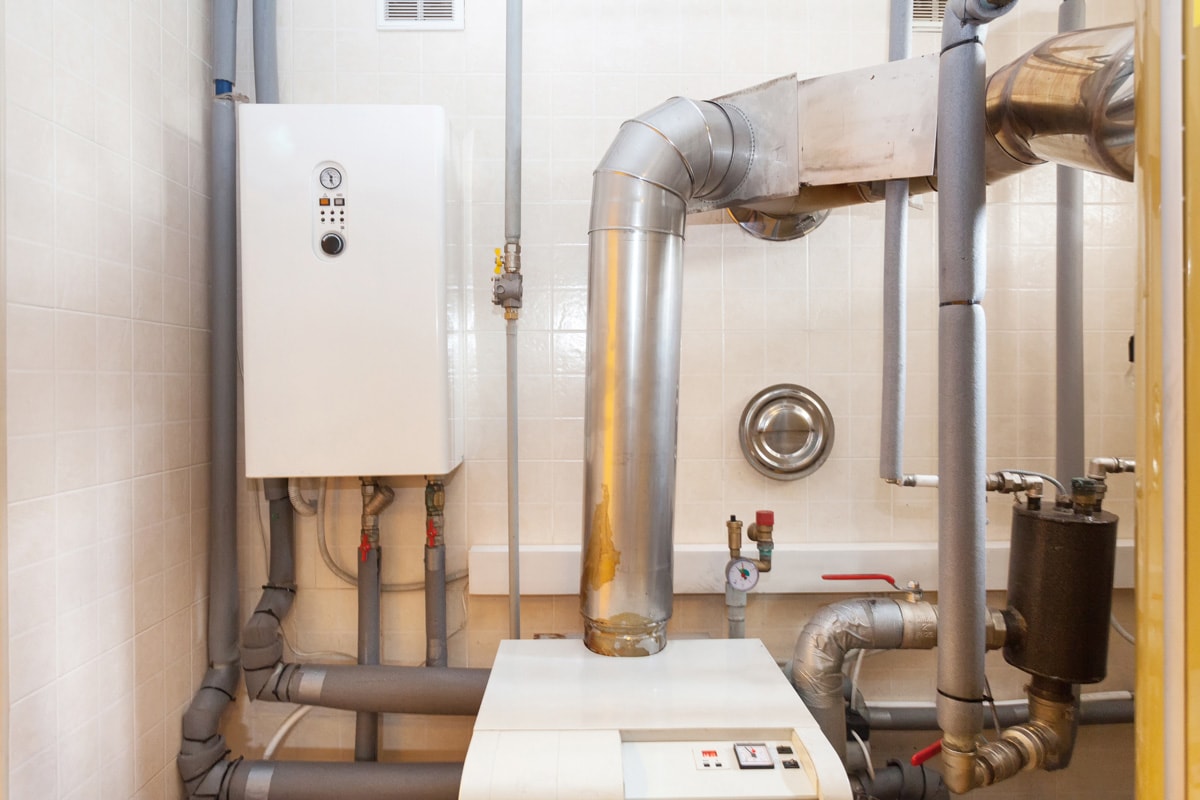
You might wonder whether to connect your water heaters in parallel or in series. This section will shed more light on the issue.
It is imperative to note that a parallel connection will result in a higher increase of hot water in your home. Also, since both tanks work in tandem, both use the same energy to deliver hot water. Hence, the life of each tank is prolonged.
In a series connection, the first tank works harder, thus reducing its lifespan. The second heater does not work much since it only maintains the warmth of the water rather than heating it.
Here are some other differences between parallel and series connections:
| Parallel | Series |
| Easy to know the malfunctioned heater. | Difficult to know which heater has malfunctioned. |
| Pipe lengths need to be the same size. | Pipe lengths do not need to be the same size. |
| Tanks have to be the same size. | Tanks can be of different sizes. |
How Long Can Your Water Heater Last?

Electric water heaters can last between 10 and 15 years. Here are some signs to watch out for to identify a failing water heater:
Cold Or Lukewarm Water
It can be frustrating when your shower has cold or lukewarm water. One reason this could happen is sediment build-up on the heating element.
The sediment deters heat from reaching the water. In addition, it reduces the heater's actual capacity resulting in less hot water available for your home. The sediments can also find their way into the plumbing system, blocking and damaging it.
Escalation Of Energy Bills
Sediment accumulation causes the water heater to work harder than usual, increasing the energy bills.
Leaks
Do not disregard any leaks, no matter how small, since they can lead to larger leaks that may result in property damage.
Frequent Problems
If you keep repairing your heater, then it may have reached the end of its lifespan. So, if your heater is at least ten years old, it may be time to replace it with a new one.
Tips On Maintaining Your Water Heater
These tips will help keep your heater in good working condition:
Regularly Flush Your Water Heater
Drain all the water in your heater, then use cold water to flush it several times until all the sediments clear.
If you reside in areas with hard water, you may want to invest in a water softener to prevent sediments from forming in your tanking.
Regularly Replace The Anode Rod
You can find this anode rod on Amazon.
The anode rod attracts the sediments and minerals that can cause it to rust. So, it is prudent to replace the anode rod often.
Examine The TPRV (Temperature Pressure Relief Valve) Often
The TPR valve is a safety feature that opens if the pressure in your heater rises to high levels. Examine it often to check if there is an accumulation of sediments - sediments can block the valve, causing an explosion.
This pressure and temperature relief valve is on Amazon.
Cost Of Repairing An Electric Water Heater
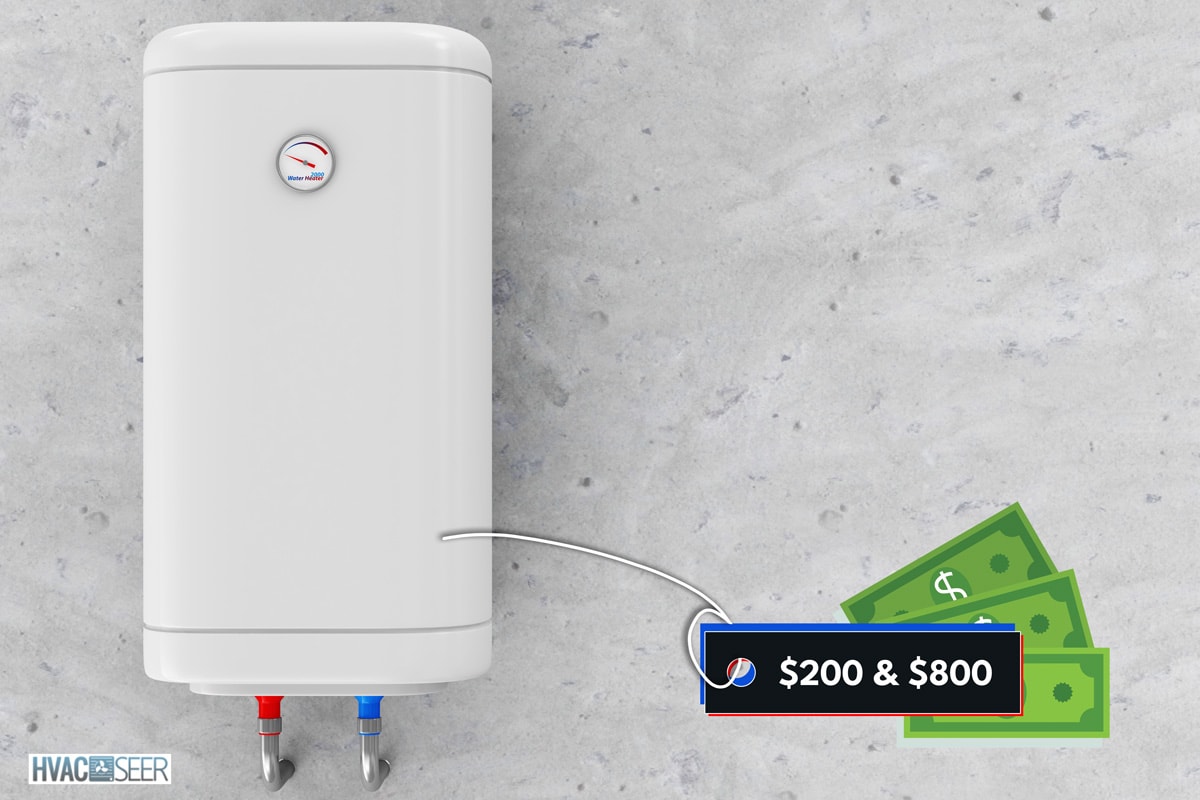
A homeowner will likely spend between $200 and $800 on a single repair. It can cost between $150 and $450 to clear the sediments from the tank. Repairing leaking pipes can cost between $55 and $350.
Because repairing the tank is not cheap, it is good to maintain your heater in good condition to reduce the repair costs.
In Closing
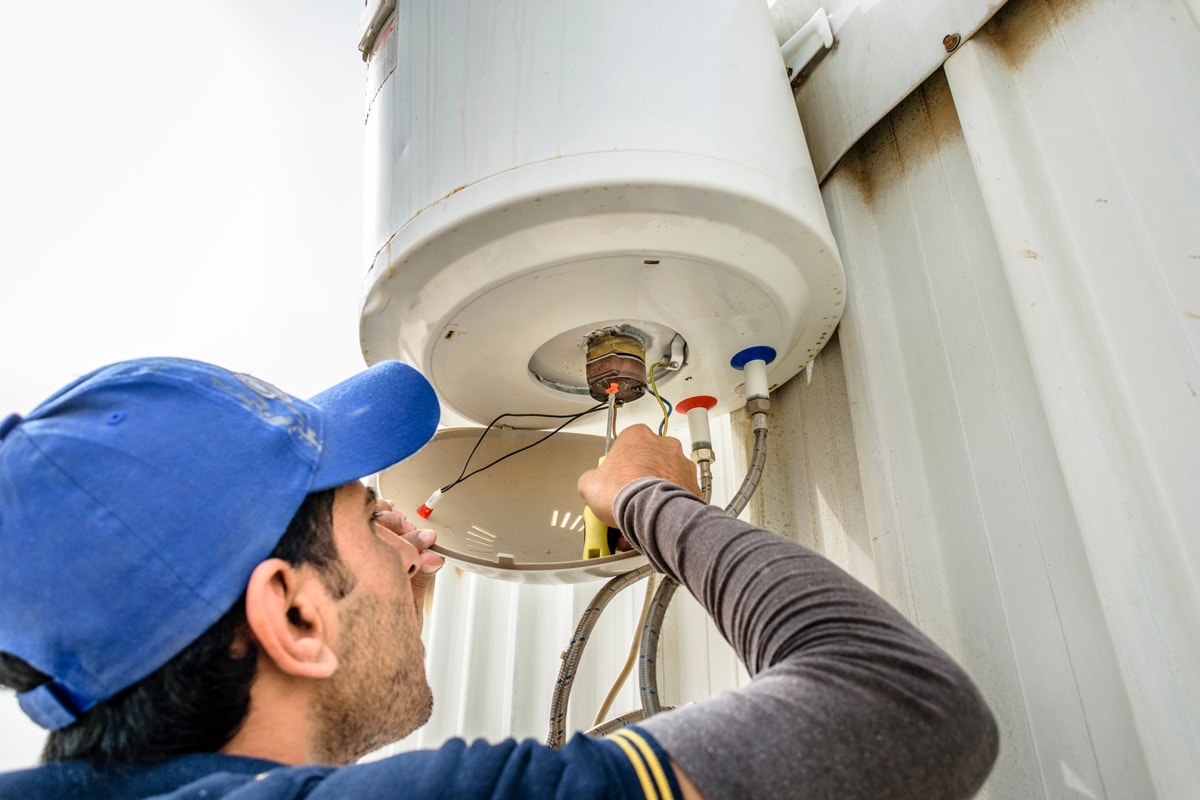
You can connect two electrical water heaters in parallel or in series. Knowing the benefits and drawbacks of each can help you settle on a suitable solution for your home. Also, taking good care of the tanks will help them last longer.
To learn more about water heaters, check out our previous posts below:

